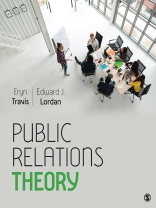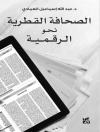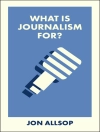Reflecting the ever-increasing changes in the public relations industry, this new text offers a fresh, up-to-date look at public relations theories as well as theories from related areas that impact public relations. Chapters move from the oldest areas of communication theory through newer models devoted to interpersonal, organizational, and mediated, up to the most current theories devoted to emerging media, including digital and social. Readers will learn how public relations and persuasion theories are at the heart of a practitioner’s day-to-day work, and see how a strong understanding of theories can make them more effective and strategic professionals.
Tabla de materias
Introduction
Acknowledgments
About the Authors
Chapter 1 • Integrating Theory and Practice
Introduction
Defining Theory
Defining Public Relations
The Only Thing Constant is Change
Public Relations Works With Other Communication Functions
Conclusion
Review Questions
Chapter 2 • Persuasion Theories
Introduction
Historical Roots of Persuasion
Formation of Attitudes, Beliefs, and Behaviors
Persuasion Theories that Drive Influence
Attribution Theory and Situational Crisis Communication Theory
Conclusion
Review Questions
Chapter 3 • Interpersonal Communication Theories
Introduction
Origins and Definitions
Links to Public Relations Practice
Relationship Construction Theories
Theories That influence the Creation of Meaning
Theories Influencing the Creation of Trust
Conclusion
Review Questions
Chapter 4 • Organizational Theories
Introduction
Organizational Theories and the PR Professional
Ways of Working
Ways of influencing change
Ways of Communicating
Conclusion
Review Questions
Chapter 5 • Mass Media Theories
Introduction
The Origins of Mass Media and Media Theory
The Small/Large Effects Continuum
Four Theories of the Press
The Gatekeeping Function
Agenda-setting Theory
Uses and Gratifications Theory
Media Systems Dependency Theory (MSDT)
Two-Step Flow Theory
Cultivation Theory
Feminist Media Theory
Conclusion
Review Questions
Chapter 6 • Public Relations Models
Introduction
Models that define PR and explain how PR meets client goals
Models that Explain how Public Relations is practiced
Models that Explain PR Campaign Development
Models that Explain PR Measurement or Value
The Barcelona Declaration of Research Principles (The Barcelona Principles)
Conclusion
Review Questions
Chapter 7 • Public Relations Theories
Introduction
Theory Must Be Open to Change
Varied Frameworks Underlying Public Relations Theory
Early Public Relations Theories and the Strong Effects Media Model
The Excellence Theory of Public Relations
Public Relations Competence Theory
Practitioner Roles Theory
Corporate Social Responsibility (CSR) Theory
Public Relations and the Relational Perspective Paradigm
Social Engagement
Cocreational Theory of Public Relations
Conclusion
Review Questions
Chapter 8 • Digital Media Theories
Introduction
Digital Media Defined
Characteristics of Digital Media
Who Is Connected?
Parallels: Traditional Media Theory and Digital Media Theory
Digital Rhetoric Theory
Digital Media Change the News Media
Conclusion
Review Questions
Chapter 9 • Social Media Theories
Introduction
Social Media Defined
Social Media in the Context of Web 2.0
Participatory Culture Theory
Rules for Conducting Public Relations Via Social Media
Diffusion of Innovation Theory
Social Media and Misinformation
Social Media and Community Orientation
Social Media Impacts Gatekeeper Theory
Global Social Media
Social Media Impact on Public Relations
Conclusion
Review Questions
Chapter 10 • The Future of Public Relations Theories
Introduction
Redefining Public Relations . . . Again
Theory Rooted in Dynamic Related Areas
Major Changes Impacting Theory-Building
The Synergy of Theory and Practice
Internationalization of Theory
Conclusion
Review Questions
References
Sobre el autor
Dr. Edward Lordan is a professor of communication studies at West Chester University. He is the author of four other communication books and the co-author of an ebook on group projects in communications, and has published research in a number of American and European academic journals. Lordan received his doctorate from the Newhouse School at Syracuse University, and has served on the faculties of Saint Louis University, Villanova University and Temple University.












